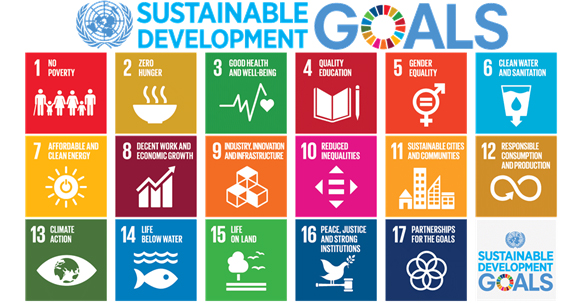Major Changes To Sustainable Development Goals Indicators
- 18 Mar 2020
- Thirty-six major changes to the global indicator framework for the Sustainable Development Goals (SDGs) were approved and adopted by the United Nations Statistical Commission (UNSC), at its 51st session that concluded on March 6, 2020, in New York.
- These changes are based on the ‘2020 comprehensive review’ conducted by the UN Inter-Agency and Expert Group on SDG Indicators (IAEG-SDGs).
- The revised global framework will have 231 indicators, approximately the same number as in the original framework.
Background
- After the IAEG’s tenth meeting, which convened in Addis Ababa, Ethiopia, in October 2019, the Group decided on a tentative initial list of proposals to be considered by the UN Statistical Commission in the 2020 Comprehensive Review, and held virtual meetings to finalize those proposals.
- The IAEG-SDG agreed on 36 major changes to the current framework:
- 14 proposals for replacements of existing indicators
- 8 proposals for revisions of existing indicator
- 8 proposals for additional indicators (for the targets listed above)
- 6 proposals for deleting existing indicators.
- The Group is also proposing 20 minor refinements, which can be seen in Annex III of the report to the Commission.
Key Changes
Eight additional indicators were added across six SDG goals — 2, 3, 4, 10, 13 and 16. These include:
- Indicator 13.2.2 on the total greenhouse gas emissions per year for the SDG target 2 to integrate climate change measures into national policies, strategies and planning.
- Prevalence of anaemia in women aged 15-49 years, by pregnancy status (percentage) under the target 2.2 to end forms of malnutrition by 2030.
- A new indicator on reducing the percentage of bloodstream infections due to selected antimicrobial-resistant organisms has been added under the Global health goal (SDG 3).
- Indicator 10.7.3 on the number of migrants killed while attempting to cross maritime, land and air borders.
- Indicator 10.7.4 on the proportion of the population who are refugees, by country of origin.
Six indicators across six SDG goals — 1, 4, 8, 11, 13 and 17 — have been deleted. These include:
- Indicator 1.a.1 on the proportion of domestically-generated resources allocated by the government directly to poverty reduction programmes.
- Indicator 4.2.1 on the proportion of children under five years of age who are developmentally on track in health, learning and psychosocial well-being, by sex.
- The portion of the indicator that measures progress for children between 0 and 23 months of age, which is currently in tier III was proposed for deletion by the IAEG.
- Under the SDG goal on combating climate change, the indicator 13.3.2, quantifying the number of countries that have communicated the strengthening of capacity-building for implementing adaptation, mitigation and technology transfer, and development actions has been deleted.
|
Global Indicator Framework For SDGs
|
Concerns Raised Over Changes Made
Concerns were raised over various changes made to the SDG indicator framework.
- Concerns were raised over the deletion of indicator 8.9.2 on the proportion of jobs in sustainable tourism industries out of total tourism jobs. When a total of 6 percent of young people globally are unemployed, sustainable tourism could be an important source of employment and an important indicator under the SDGs
- China voiced concern about the addition of the GHG emissions indicator, noting that the global response to climate change should focus on equity and preserve each country’s equal right to development.
- The United Arab Emirates suggested “cancelling” all indicators that remain in Tier 3, given the relatively short time left to implement them.
- The Caribbean Community (CARICOM) lamented the lack of an indicator for older persons under SDG target 2.2. on malnutrition.
- The African Group recommended reinforced collaboration and coordination with regional commissions.
- Others called for improved coordination between the custodian agencies for the indicators and national governments.
About Sustainable Development Goals (SDGs)
- The Sustainable Development Goals (SDGs), also known as the Global Goals, were adopted by all United Nations Member States in 2015 as a universal call to action to end poverty, protect the planet and ensure that all people enjoy peace and prosperity by 2030.
- The 17 SDGs are integrated—that is, they recognize that action in one area will affect outcomes in others, and that development must balance social, economic and environmental sustainability.





